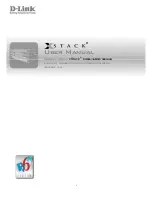
Configuring Security
Configuring 802.1X
Cisco Small Business 200 1.1 Series Smart Switch Administration Guide
248
17
STEP 3
Click
Apply
. The 802.1X properties are modified, and the Running Configuration
file is updated.
Defining 802.1X Port Authentication
The
Port Authentication
page enables configuration of 802.1X parameters for
each port. Since some of the configuration changes are only possible while the
port is in
Force Authorized
state, such as host authentication, it is recommended
that you change the port control to
Force Authorized
before making changes.
When the configuration is complete, return the port control to its previous state.
NOTE
A port with 802.1x defined on it cannot become a member of a LAG.
To define 802.1X authentication:
STEP 1
Click
Security
>
802.1X
>
Port Authentication
. The
Port Authentication
page
displays.
This page displays authentication settings for all ports.
STEP 2
Select a port, and click
Edit.
The
Edit Port Authentication
page displays.
STEP 3
Enter the parameters.
•
Interface
—Select a port.
•
User Name
—Displays the username of the port.
•
Current Port Control
—Displays the current port authorization state. If the
state is
Authorized
, the port is either authenticated or the
Administrative
Port Control
is
Force Authorized
. Conversely, if the state is
Unauthorized
,
then the port is either not authenticated or the
Administrative Port Control
is
Force Unauthorized
.
•
Administrative Port Control
—Select the Administrative Port Authorization
state. The options are:
-
Force Unauthorized
—Denies the interface access by moving the
interface into the unauthorized state. The switch does not provide
authentication services to the client through the interface.
-
Auto
—Enables port-based authentication and authorization on the
switch. The interface moves between an authorized or unauthorized
state based on the authentication exchange between the switch and the
client.
















































